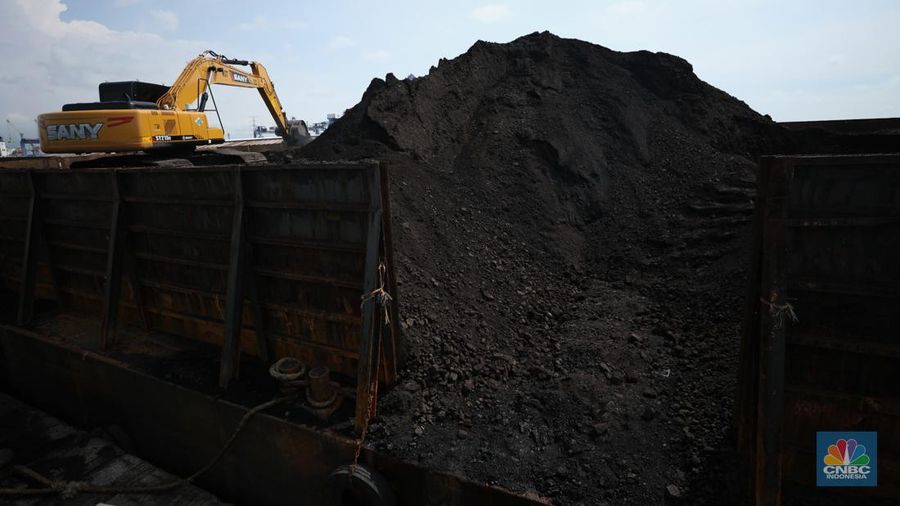
Jakarta, CNBC Indonesia – Coal prices fell sharply for a week, after being red for 4 consecutive days.
According to Refinitiv data, the coal price for the August contract on the ICE Newcastle market closed at US$141.80/ton on Friday (7/7) or fell 5.28% in the week.
This week, coal prices have decreased since Tuesday (5/7). Meanwhile, in a month the black stone is minus 0.04% and since the beginning of the year (YtD) it has fallen to minus 63.60%.
The collapse in coal prices was triggered by the weakening of other energy commodity prices, sluggish demand, and the possibility of high interest rates in the United States (US).
EU Dutch TTF (EUR) European natural gas prices fell 6% yesterday to 32.35 euros per mega-watt hour (MWh). American natural gas prices also fell 1% while Brent crude oil prices fell 0.21%.
Gas prices weakened as supply worries eased. The flow of gas from Norway, which was initially feared to be hampered, can certainly flow normally again.
Demand for gas from the industry has also fallen while gas supply in storage is still 78.9%, far above the average of the last five years.
Coal is an alternative energy source for gas or oil, so prices compete and influence each other.
Coal prices also weakened due to sluggish demand, especially from China.
The S&P GSCI Commodities index shows that commodity prices have fallen 25% in the last two months.
Energy commodities such as oil and gas have fallen 23%. Refinitiv data even shows that coal prices have fallen by more than 65%.
Weak manufacturing activity and China’s economy are the main cause. China is the largest consumer of commodities in the world, including coal.
China was originally expected to be able to boost commodity prices in line with the reopening of their borders. However, their manufacturing activity actually weakened.
The Caixin/S&P Global manufacturing purchasing managers’ index showed China’s manufacturing activity slumping to 50.5 in June 2023 from 50.9 in May this year.
Weak industrial activity also reduced consumption of coking coal at power plants. The still gloomy property sector has contributed to sluggish demand for iron and steel. In fact, coking coal is an important part of the industry.
The weakening European and US economies also reduced demand for steel.
“Iron and copper prices are a barometer for measuring economic cycles. This weakening will spread to other countries. China’s failure to live up to market players’ expectations is the main reason why commodity prices have difficulty creeping up,” said senior commodity analyst from Kpler, Reid I’Anson, quoted from CNBC International.
India, as the largest coal consumer, is also projected to reduce imports, which will also put pressure on the price of black sand.
India will face the rainy season in the next few weeks so imports are projected to be sluggish. Moreover, their production and supply are also increasing sharply.
Coal supply in India as of June 30 2023 reached 107.15 million tonnes. This supply is much higher than 77.86 million tons as of June 2023.
Meanwhile, coal production in India reached 222.93 million tons in April-June 2023. This amount increased by 8.4% compared to the same period last year.




